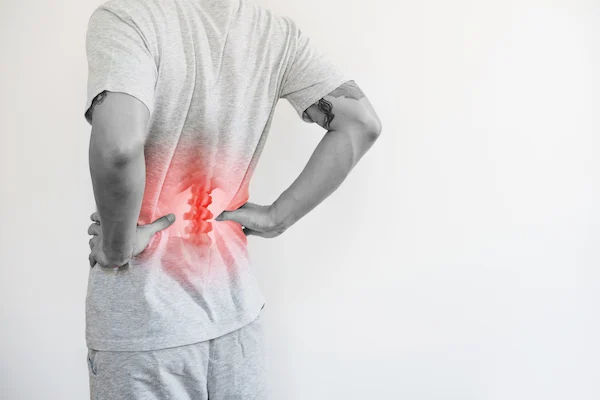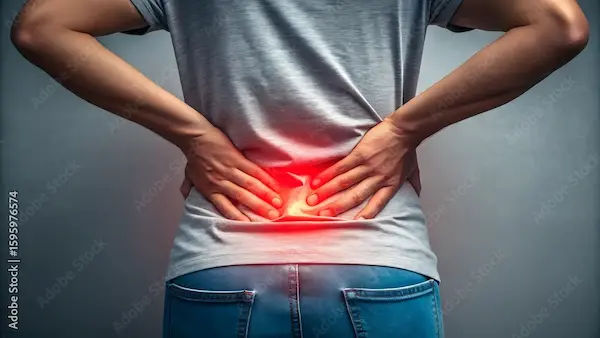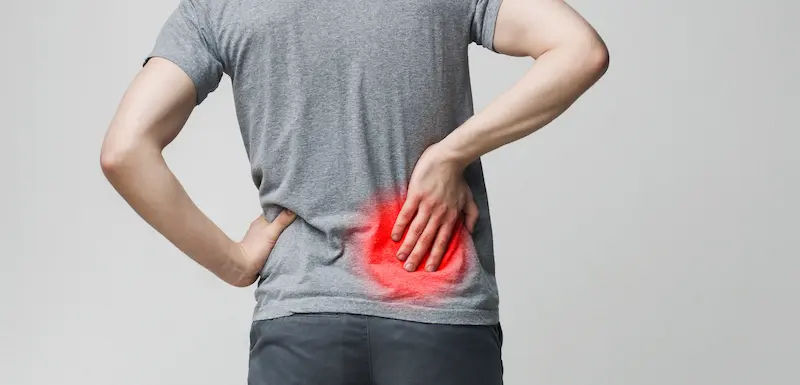10 Effective Ways to Prevent Back Pain and Improve Posture
Know about back pain, understand your posture, ergonomics, what back pain is, the power of exercise, lifestyle choices and more.


Introduction
Back pain is a universal experience, affecting millions of people worldwide. Whether it's a dull, constant ache or a sudden, sharp stab, it can disrupt your daily life, hinder your productivity, and diminish your overall well-being. Often, we accept it as an inevitable part of ageing or a sedentary lifestyle. But what if you could take proactive steps to prevent it? The good news is that most back pain is preventable through conscious habits and lifestyle adjustments. This comprehensive guide will walk you through ten powerful, evidence-backed strategies to strengthen your back, correct your posture, and build a resilient foundation against pain.
Understanding Your Back: The Basics of Spinal Health
Your back is a complex structure of bones, muscles, nerves, and discs. Understanding how it works is the first step toward protecting it.
The Anatomy of Your Spine
Your spine is a column of 24 individual bones (vertebrae) stacked on top of each other, cushioned by soft, gel-like discs that act as shock absorbers. The spinal cord runs through a canal in the centre of these bones, sending nerve signals throughout your body. Muscles and ligaments hold everything together. Pain occurs when any of these components—the nerves, discs, joints, or muscles are strained, injured, or inflamed.
Consult an Orthopaedic Doctor for Personalised Advice
Common Causes of Back Pain
The most common cause of acute back pain is a simple muscle strain or ligament sprain, often from improper lifting or a sudden, awkward movement. Other causes include:
Herniated or Bulging Discs: When the soft material inside a disc pushes out and irritates a nearby nerve.
Arthritis: Osteoarthritis can affect the lower back, leading to spinal stenosis (narrowing of the space around the spinal cord).
Skeletal Irregularities: Such as scoliosis (a curvature of the spine).
Master Your Posture: The First Line of Defense
Poor posture is a silent contributor to back pain, placing unnecessary stress on your spine over time.
Perfecting Your Sitting Posture at Work
If you have a desk job, how you sit is crucial. Keep your feet flat on the floor and your knees level with or slightly lower than your hips. Your back should be fully supported against your chair's backrest. Your screen should be at eye level to prevent hunching. A small, rolled-up towel or lumbar cushion behind your mid-back can help maintain its natural curve.
How to Stand Correctly
For proper standing posture for back health, stand with your weight primarily on the balls of your feet, with your knees slightly bent. Keep your feet shoulder-width apart. Let your arms hang naturally down the sides of your body. Stand straight and tall with your shoulders pulled backwards. Avoid locking your knees.
Ergonomics: Setting Up Your Environment for Success
Your environment should work for you, not against you.
Creating a Back-Friendly Workspace
Invest in an ergonomic chair that supports the natural curve of your spine. Ensure your desk allows your forearms to be parallel to the floor when typing. Position your keyboard and mouse close enough to avoid reaching. The top of your monitor should be at or slightly below eye level.
The Best Sleeping Positions to Avoid Back Pain
Sleep is when your body repairs itself. The best position for your back is on your side with your knees slightly bent. Place a pillow between your knees to keep your spine neutral. If you sleep on your back, placing a pillow under your knees can help. A medium-firm supportive mattress is generally recommended to provide a balance of comfort and spinal alignment.
The Power of Movement: Exercise and Stretching
A sedentary lifestyle is a major risk factor for back pain. Regular movement is medicine.
Core-Strengthening Exercises for Spinal Support
Your core muscles (abdominals, back, and pelvis) act as a natural corset for your spine. Weak core muscles can lead to poor posture and pain. Incorporate the best core exercises for back pain, like planks, bird-dog, and bridges, into your routine. These exercises build stability without putting strain on your back.
Daily Stretches to Improve Flexibility and Reduce Pain
Tight muscles, especially hamstrings and hip flexors, can pull on your pelvis and exacerbate back pain. A daily routine of gentle stretches like knee-to-chest stretches, pelvic tilts, and cat-cow poses can dramatically improve flexibility and reduce tension. Yoga for back pain beginners is an excellent, structured way to achieve this.
Lift Smart, Not Hard: Proper Lifting Techniques
Improper lifting is a classic cause of acute back injuries.
The Key Steps to Safe Lifting
Never bend from your waist. The correct technique is to:
1. Stand close to the object with your feet shoulder-width apart.
2. Bend at your knees and hips, not your spine (squat down).
3. Tighten your core muscles as you lift the object.
4. Hold the object close to your body.
5. Lift using your leg muscles as you stand up straight.
6. Avoid twisting your body while lifting; pivot with your feet instead.
Lifestyle Choices for a Healthier Back
Your daily habits have a profound impact on your spinal health.
Maintaining a Healthy Weight to Reduce Strain
Excess weight, especially around the midsection, shifts your centre of gravity forward and puts additional strain on your lower back muscles. Losing even a small amount of weight can significantly reduce this pressure and lower your risk of back pain.
The Impact of Smoking and Nutrition on Back Health
Here’s a unique insight many overlook: Smoking reduces blood flow to the spine, which can prevent nutrients from reaching the spinal discs, causing them to degenerate faster. Furthermore, an anti-inflammatory diet rich in calcium and vitamin D can support bone health. If you suspect a deficiency is impacting your musculoskeletal health, Apollo24|7 offers convenient home collection for tests like vitamin D or HbA1c to help you get a clearer picture.
When Home Care Isn't Enough: Recognising Red Flags
While prevention is powerful, it's crucial to know when to seek professional help.
Signs You Should Consult a Doctor
Most back pain improves with self-care. However, you should consult a doctor for back pain if you experience:
Pain that doesn't improve after a few weeks of home care.
Severe pain that doesn't change with rest.
Pain that radiates down one or both legs, especially if it goes past the knee.
Weakness, numbness, or tingling in one or both legs.
Unexplained weight loss alongside back pain.
Loss of bowel or bladder control.
If you experience any of these red-flag symptoms, consult a doctor online with Apollo24|7 for immediate evaluation and guidance.
Conclusion
Preventing back pain is not about one magic bullet; it's about integrating a series of smart, consistent habits into your daily life. By understanding your spine's anatomy, mastering your posture, optimising your environment with ergonomics, and committing to regular core-strengthening and flexibility exercises, you build a formidable defense against pain. Remember to lift with your legs, not your back, and support your spine through healthy lifestyle choices like maintaining a good weight and avoiding smoking. Listen to your body, it will tell you when something is wrong. By taking these proactive steps today, you are investing in a stronger, more resilient, and pain-free back for years to come. Start with one change, and gradually build upon your success.
Consult an Orthopaedic Doctor for Personalised Advice
Consult an Orthopaedic Doctor for Personalised Advice

Dr. Manoj Dinkar
Orthopaedician
15 Years • MBBS, Dip (Orthopaedics)
New Delhi
THE DOCTORS NESST, New Delhi

Dr. Keshav Digga
Orthopaedician
14 Years • MBBS, MS Orthopaedics, FIASM, FIMISS
Kolkata
DIGGA HEALTHCARE, Kolkata

Dr. Samir Basak
Pain Management Specialist
15 Years • MBBS, MD Anaesthesiology
Kolkata
Dr. Samir Basak's Chamber, Kolkata
(25+ Patients)

Dr. Anil Pradeep Jadhav
Orthopaedician
23 Years • MBBS MS (Ortho)
Nashik
Apollo Hospitals Nashik, Nashik
(25+ Patients)

Dr. Bhanu Prakash Reddy Rachamallu
Orthopaedician
24 Years • MBBS , D'ORTHO, DNB (ORTHO), Mch (ORTHO), Fellow in ARTHROPLASTY
Hyderabad
Apollo Hospitals Jubilee Hills, Hyderabad
(75+ Patients)
More articles from Back Pain
Frequently Asked Questions
1. What is the single best exercise for back pain prevention?
While no single exercise is best for everyone, the plank is universally excellent as it strengthens the entire core—abdominals, back, and glutes—without straining the spine, providing 360-degree support.
2. Can a bad mattress really cause back pain?
Absolutely. A mattress that is too soft or too firm fails to support the natural curve of your spine, leading to misalignment and muscle strain throughout the night, which results in morning pain and stiffness.
3. I have a desk job. What's the most important thing I can do?
Beyond setting up an ergonomic workstation, the most critical thing is to break up long periods of sitting. Set a timer to stand up, walk around, and stretch for 2-3 minutes every 30 minutes.
4. How does stress contribute to back pain?
Stress causes muscle tension, particularly in the neck, shoulders, and back. This chronic tension can lead to pain, stiffness, and even muscle spasms, creating a cycle of stress and pain.
5. When should I use heat vs. ice for back pain?
Use ice for the first 24-48 hours after a new, acute injury to reduce inflammation. Use heat for chronic muscle pain or stiffness to relax tight muscles and improve blood flow




